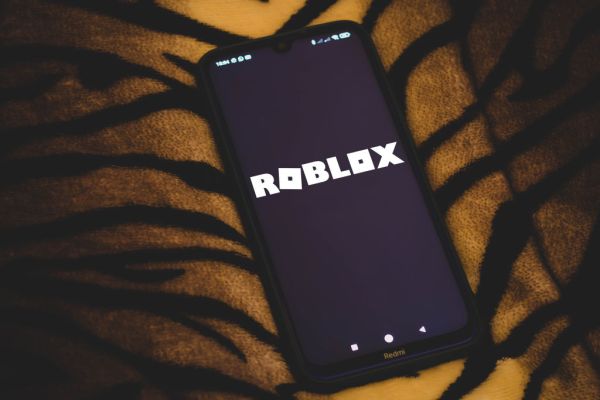With Roblox’s massive IPO this month, game developers, brands and investors alike are wondering what factors cause the most successful games on this $47 billion platform to break out from the millions of user-generated passion projects.
According to Roblox’s S-1 filing, nearly 250 developers and creators earned $100,000 or more in Robux in the year through September 2020 out of nearly 1 million creators on the platform.
From Gamefam’s first game two years ago that topped out at only 25 concurrent players to our current portfolio with 2 million to 3 million daily visits, our team learned to develop on Roblox the hard way — by trial and error and by getting better at listening to the Roblox community’s unique gamer culture and vernacular.
Even the most experienced and talented game designers from the mobile F2P business usually fail to understand what features matter to Robloxians.
For those entrepreneurs just starting their journey in Roblox game development, these are the most common mistakes I have seen gaming professionals (myself included) make on Roblox:
1. Using the established free-to-play (F2P) mobile game mechanics
In the F2P mobile games market, it’s all about layered game loops: play a match with the hero, level the hero up using resources from the match, buy more heroes to merge with the first hero, open up new matches with new rules to win more resources, and on and on. These require ongoing player tutorials across hours of play sessions. These mechanics tend to backfire on Roblox because players have no tolerance for anything but immediate, visceral fun.
Accordingly, in mobile F2P, a robust tutorial for new users is oftentimes one of the biggest investments during development. But in our Roblox game Speed Run Simulator (more than 400,000 daily visits), we saw a significant increase in D1 retention when we removed the tutorial entirely and just allowed existing players to guide new players’ understanding of the game. The differences between Roblox and mobile F2P are not only numerous but also sometimes profoundly counterintuitive.
2. Optimizing to make money off of “whales”
Roblox players spend because they’re getting something they want. They won’t be cajoled or coerced into spending like in a mobile game where progress is restricted or slowed without making an in-app purchase (think Candy Crush).
Moreover, the well-worn strategy of building a mobile games business around high-lifetime-value “whales” — outlier users who will spend huge amounts of money over a few days — has never gained any traction on Roblox (although it has certainly been tried). Among the many strategies we have tested, the biggest revenue multipliers have come from appealing to the broader community of our players — such as the more than 25% increase in revenue per visit in our Little World game by redesigning the game’s VIP package, an opportunity to gain immediate social status within this multiplayer world.
3. Trying to fast follow and “one-up” a popular game
Roblox is the DIY, artsy, punk face of gaming, where a generation of developers with ages ranging from 15 to 25 years old define the culture. Authenticity and community are everything to core Roblox users, and violating those norms will result in users avoiding your games. A clear mistake here is to try to usurp an existing hit game’s audience with a slightly better version of the same thing — there’s deep brand loyalty in this community. Developers have to offer something genuinely different to build a sustainable audience. When we set out to grow a new shooter game on the platform, we saw the success of games like Arsenal and Counter-Blox and knew we had to pioneer a different approach. The result, Polybattle, grew to 200,000 daily visits with an engaged community of superfans because players responded well to our introduction of class-based teams and destructible vehicles into the shooter category.
4. Focusing on better graphics
If AAA graphics were important for making Roblox games successful, Roblox wouldn’t exist to begin with. High-end graphics is a way that major AAA console and PC games differentiate from competitors and offer something fresh to players. Roblox has never had high-end graphics, trading amazing real-time multiplayer action and speed of access for pixels, and while Roblox is always increasing the platform’s graphics capabilities, better graphics have never been what separates the most popular Roblox games from the rest. Roblox culture celebrates the “bloxiness” of the platform.
5. Making a Roblox game without first spending 1,000 hours on Roblox
Roblox has been around for over 15 years. The platform is deeply informed by its own context and speaks in its own social gaming language. Even the most experienced and talented game designers from the mobile F2P business usually fail to understand what features matter to Robloxians.
When we launched the company in 2019, even after years of playing Roblox, we failed fast and often, regularly dumbfounded by the intricacies of such seemingly small games. It’s not nearly as simple as it looks. In our recruiting, we made it a priority to ensure that the majority of our hires (we now have 40 full-time employees) are native Roblox developers who have been on Roblox since their early teens. Imagine launching a consumer startup in a country you have spent almost no time in: There’s just too much you won’t get about your target users. You have to first spend the time to integrate into the culture before you can deliver to its preferences.
As Roblox continues to age up with its users and provide more sophisticated technology to its developer community, we predict the unique conventions of the platform will only deepen, and then begin to spread across other parts of the gaming ecosystem. Given that the majority of Americans under 16 are Roblox users, the norms of Roblox are likely to impact digital entertainment broadly as these users become the driving force of the market, surprising the incumbent gaming industry’s expectations and challenging the notions of what a “game” even is or can be.
